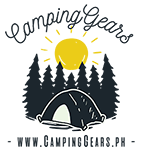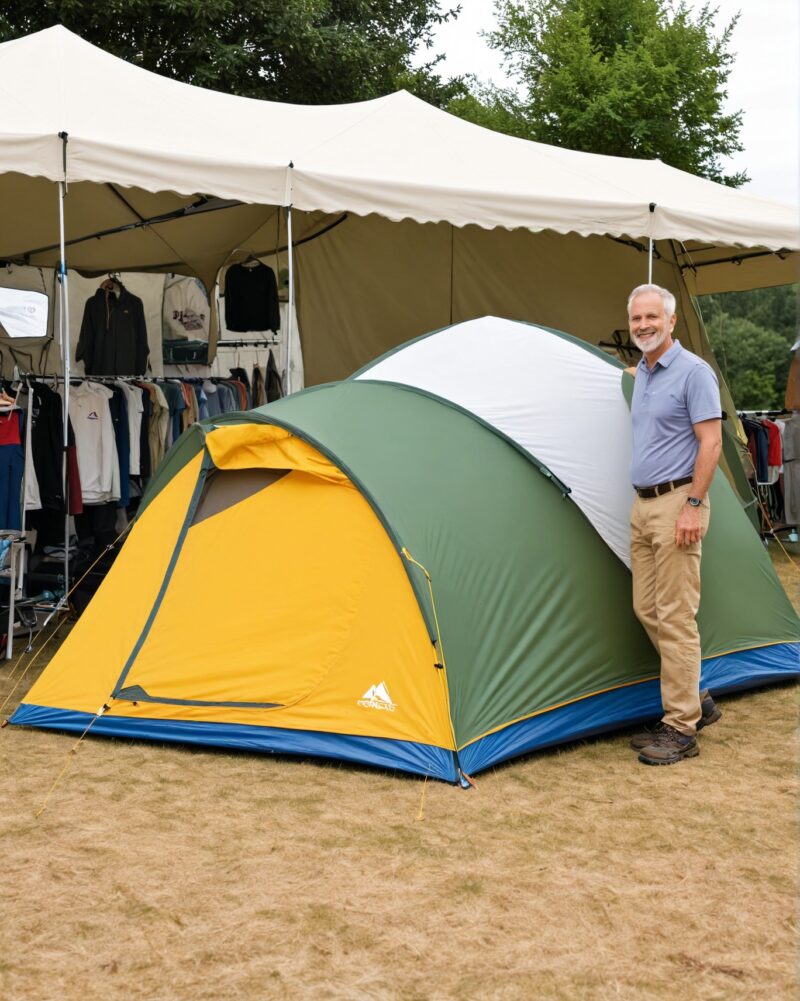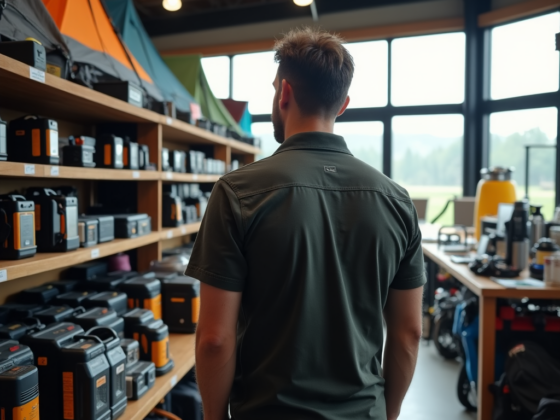In your search for the best camping sites in the Philippines, ensuring you have the right and proper equipment for outdoor adventures is pivotal. When it comes to outdoor adventures, having a reliable and durable tent is crucial. Heavy-duty tents are designed to withstand the rigors of rugged terrain, inclement weather, and extended use. These tents are built to provide superior protection, stability, and longevity, making them an essential investment for serious campers, backpackers, and adventurers.
This comprehensive guide will explore the key factors to consider when choosing the best heavy-duty tent for your camping trip. From understanding the different types of heavy-duty tents to identifying the must-have features, this article will equip you with the knowledge to make an informed decision and ensure a comfortable and enjoyable outdoor experience.
Factors to Consider When Choosing a Heavy-Duty Tent
Selecting the right heavy-duty tent for your camping trip involves carefully evaluating several factors. These considerations will help you find a tent that meets your specific needs and ensures a successful and comfortable outdoor adventure.
1. Intended Use
The first step in choosing a heavy-duty tent is to determine its intended use. Are you planning a backpacking trip, a family camping excursion, or an extended expedition in remote wilderness? The type of activity and the number of people you’ll be accommodating will dictate the size, weight, and overall design of the tent you need.
2. Weather Conditions
Heavy-duty tents are designed to withstand various weather conditions, such as high winds, heavy rain, and even snow. Consider the climate and expected weather patterns in the areas you’ll be camping. Opt for a tent with features like reinforced poles, waterproof fabrics, and strong guy lines to ensure maximum protection against the elements.
3. Tent Size and Capacity
Determine the number of people who will be using the tent and choose a size that provides ample space for your group. Keep in mind that heavy-duty tents tend to be larger and heavier than their lightweight counterparts, so consider the trade-offs between size, weight, and portability.
4. Durability and Longevity
Heavy-duty tents are built to withstand the rigors of outdoor use, but some are more durable than others. Look for tents constructed with high-quality materials, such as reinforced fabrics, sturdy poles, and reliable zippers. Investing in a well-made tent can ensure it lasts for many camping trips to come.
5. Ease of Setup and Takedown
Setting up and taking down a heavy-duty tent should be a straightforward process, especially if you’ll be doing it regularly or in less-than-ideal conditions. Consider the tent’s design, the number of poles, and any additional features that may affect the setup and takedown process.
6. Weight and Portability
While heavy-duty tents are generally heavier than their lightweight counterparts, you’ll still want to consider the overall weight and portability of the tent, especially if you’ll be backpacking or hiking to your campsite. Look for tents with features like removable components or lightweight materials to reduce the overall weight.
By carefully considering these factors, you’ll be well on your way to finding the best heavy-duty tent for your camping trip.
Understanding the Different Types of Heavy-Duty Tents
Heavy-duty tents come in a variety of designs and styles, each with its own unique features and benefits. Familiarizing yourself with the different types of heavy-duty tents will help you make an informed decision that aligns with your specific needs and preferences.
Dome Tents
Dome tents are a popular choice for heavy-duty camping due to their sturdy, freestanding design and excellent weather resistance. These tents typically feature a rounded or semi-circular shape, which helps to shed wind and snow effectively. Dome tents often come with reinforced poles and a durable, waterproof outer fabric, making them a reliable option for a wide range of camping conditions.
Cabin Tents
Cabin tents are known for their spacious, vertical walls and headroom, providing a more comfortable and livable space for larger groups or families. These tents often feature multiple rooms or partitions, allowing for greater privacy and organization. Cabin tents are generally larger and heavier than dome tents, but they offer a more traditional camping experience with ample room to move around.
Expedition Tents
Designed for the most extreme outdoor conditions, expedition tents are built to withstand the harshest weather, including high winds, heavy snow, and intense rain. These tents feature reinforced frames, heavily-reinforced fabrics, and advanced features like vestibules and storm flaps to provide maximum protection. Expedition tents are typically the most durable and weather-resistant heavy-duty tents, making them a popular choice for mountaineering, polar expeditions, and other challenging environments.
Hybrid Tents
Hybrid tents combine the features of different tent styles, offering a versatile and adaptable solution for a range of camping scenarios. These tents may feature a blend of dome and cabin-style elements, or incorporate elements from both freestanding and semi-freestanding designs. Hybrid tents are a great option for campers who need a tent that can handle a variety of conditions and activities.
Understanding the unique characteristics of each heavy-duty tent type will help you make an informed decision that aligns with your specific camping needs and preferences.
Features to Look for in a Heavy-Duty Tent
When selecting a heavy-duty tent, it’s important to consider the various features that can enhance its performance, durability, and overall user experience. By identifying the must-have features, you can ensure that your chosen tent meets your specific requirements and provides the level of protection and comfort you need.
Waterproof and Breathable Fabrics
The outer fabric of a heavy-duty tent should be highly waterproof and durable, able to withstand heavy rain, wind, and snow. Look for tents with a water-resistant rating (also known as hydrostatic head) of at least 3,000 mm, which indicates excellent waterproofing. Additionally, the inner lining should be made of a breathable material, such as mesh or polyester, to promote airflow and reduce condensation buildup.
Reinforced Poles and Guylines
Heavy-duty tents are designed to withstand the elements, and their structural integrity is crucial. Look for tents with reinforced poles, typically made of aluminum or carbon fiber, that are strong and flexible enough to resist bending or breaking in high winds. Sturdy guylines and reinforced attachment points are also essential for providing additional stability and anchoring the tent securely to the ground.
Vestibules and Storage Spaces
Vestibules are covered, protected areas at the tent’s entrance that provide additional storage space for gear, boots, and other items. These features help to keep the main living area clean and organized, while also offering a sheltered space for entering and exiting the tent. Some heavy-duty tents also feature internal storage pockets or gear lofts to further maximize the available space.
Ventilation and Temperature Control
Proper ventilation is crucial for maintaining a comfortable and healthy environment inside the tent. Look for tents with adjustable vents, mesh panels, and/or windows that allow for adequate airflow and temperature regulation. This can help to prevent the buildup of condensation and ensure a more pleasant camping experience, especially in warm or humid conditions.
Ease of Setup and Takedown
Setting up and taking down a heavy-duty tent should be a straightforward process, especially in less-than-ideal weather conditions. Consider tents with color-coded or labeled components, as well as features like pre-attached guy lines and easy-to-use pole clips or sleeves. The overall weight and packability of the tent should also be factored in, particularly if you’ll be transporting it over long distances.
By focusing on these key features, you can ensure that the heavy-duty tent you choose provides the durability, protection, and user-friendly experience you need for a successful and comfortable camping trip.
Camping Tent Care: Tips for Caring for Your Heavy-Duty Tent
Proper care and maintenance are essential for ensuring the longevity and performance of your heavy-duty tent. By following these camping tent care tips, you can extend the lifespan of your investment and keep your tent in top condition for many outdoor adventures.
Cleaning and Drying
After each camping trip, it’s important to clean your tent thoroughly. Use a mild soap and warm water to gently scrub the fabric, being careful not to use any harsh chemicals or abrasives that could damage the material. Rinse the tent thoroughly and allow it to fully dry before storing it.
Proper Storage
When not in use, store your heavy-duty tent in a cool, dry place, away from direct sunlight and heat sources. Avoid storing the tent while it’s still damp or wet, as this can lead to the growth of mold and mildew. If possible, store the tent in a breathable storage bag or container to prevent any damage to the fabric or components.
Inspection and Repairs
Regularly inspect your heavy-duty tent for any signs of wear, such as torn or frayed fabric, broken poles, or damaged zippers. Address any issues promptly by repairing or replacing the affected components. Seek professional assistance if you’re unsure about the extent of the damage or the best way to proceed with the repairs.
Waterproofing and Seam Sealing
Over time, the waterproofing and seam sealant on your heavy-duty tent may deteriorate. Regularly apply a tent-specific waterproofing spray or seam sealer to maintain the tent’s water-resistant properties and ensure it continues to provide reliable protection against the elements.
Proper Pitching and Staking
When setting up your heavy-duty tent, be sure to follow the manufacturer’s instructions carefully. Ensure that the tent is properly pitched, with all guylines and stakes securely in place. This will help to maximize the tent’s stability and weather resistance, and prevent any premature wear or damage.
By following these care and maintenance tips, you can ensure that your heavy-duty tent remains in top condition, ready to provide reliable protection and comfort for your future camping adventures.
Bottomline: Choosing the Best Heavy-Duty Tent for Your Camping Trip
Selecting the right heavy-duty tent for your camping trip is a crucial decision that can make the difference between a successful and comfortable outdoor experience and a challenging one. By considering the factors discussed in this guide, understanding the different types of heavy-duty tents, and identifying the must-have features, you can make an informed choice that meets your specific needs and preferences.
Remember, investing in a high-quality heavy-duty tent is an investment in your outdoor adventures. By properly caring for and maintaining your tent, you can ensure that it serves you well for many years to come. So, take the time to research, compare, and choose the best heavy-duty tent for your next camping trip, and get ready to embark on an unforgettable outdoor experience.
Ready to find the perfect heavy-duty tent for your next camping trip? Browse our selection of top-quality tents and accessories to ensure a comfortable and reliable outdoor adventure.


